
© Dave Morgan. (Click image for larger version)
Birmingham Royal Ballet
Polarity & Proximity: Kin., Embrace, In The Upper Room
★★★✰✰
London, Sadler’s Wells
16 June 2018
Gallery of pictures by Dave Morgan
www.brb.org.uk
www.sadlerswells.com
Giving mixed programmes an overarching title suggests a connectivity that often only exists tenuously, if at all; especially, as in this case, when the three works so conjoined were made, years apart. Joining ‘polarity’ and ‘proximity’ together as a title suggests contradiction: polarity is a state of opposing tendencies; proximity, a nearness. They are nouns that are poles apart.
And, yet, a current of connectivity flows through this marathon of largely pure dance. Torrents of beautiful movement shine through the hazy and sometimes gloomy stage environment. The smoke machines were on overtime. In Alexander Whitley’s Kin. (the full stop is important), the dance had a lyrical fluidity; George Williamson’s Embrace was dance as a thematic statement; and – the veteran of the trio, made in 1986 – Twyla Tharp’s In the Upper Room was pulsating, power dance that seemed to have pre-empted the age of the Millennial. The dancers across all three works shared the same characterless personality, which presented a problem in terms of holding on to one set of images before the next flood of movement arrived.

© Roy Smiljanic. (Click image for larger version)
Each work also connected a similar chamber design ethos. Jean-Marc Puissant’s designs for Kin. settled on a notion of the interior referenced in Phil Kline’s string quartet (The Blue Room and Other Stories), starkly evidenced by three large doors set in a back wall, each seeming to come from a different era. A comparable foreshortened stage with a platform – like a wide window ledge – hosting a series of rotatable, opaque panels was the key design element – by Madeleine Girling (a first-time designer for dance) – in Embrace. And, the idea of Twyla Tharp’s Upper Room is achieved exclusively through the compartmentation of Jennifer Tipton’s lighting.
The programme had another connection in an all-American trio of living composers. Kline’s string quartet was composed in 2002, a return to traditional instruments after a prolonged affair with experimental music (including work for the Bang on a Can collective); Williamson chose Sarah Kirkland Snider, another newcomer to dance, whose compositions range from indie-rock, electronic pop to classical chamber music.
While both these adopted and bespoke compositions straddled the bridge between modern and classical, neither music endured in the memory when compared to the pulsating, nine-movement, acoustic composition of Philip Glass, commissioned specifically, by Tharp, for In the Upper Room. Layer upon layer of infectious music drives the surging movement. Despite the proliferation of smoke, In the Upper Room makes for an outstanding spectacle, enhanced by Norma Kamali’s vivid and sexy costumes. At almost 45 minutes, it presents non-stop waves of dance, which must be exhausting to perform (and it began to look a little rough around the edges by the later movements) and is certainly exhilarating to watch.

© Dave Morgan. (Click image for larger version)
Kin., of course, relates to family but the extra full stop gives Whitley’s concept a second front as an abbreviation for kinetic, an adjective relating to motion or movement in a work of art. The former idea of kith and kin was emphasised by the return of Joseph Caley (last seen, barely a week ago, partnering Alina Cojocaru and Maria Alexandrova in The Sleeping Beauty) from English National Ballet to his former company in order to resume a dance partnership with his wife, Jenna Roberts (they had danced together in the 2014 premiere of Whitley’s work); and also, in another sense, by Whitley’s own return to have made a work for the company in which he began his career as a professional dancer.
Kin. has four largely even sections of approximately five minutes’ duration, and the third quartile was one luscious duet for Caley and Roberts; a fine neoclassical pas de deux given great emotion and intimacy in their mutual performance. Much of Whitley’s recent work – largely for his own nascent company – has offered a string of cerebral challenges in scientific, astrological or engineering associations but here it was just a stream of aesthetically pleasing movement for the ensemble of ten dancers.

© Dave Morgan. (Click image for larger version)
Williamson’s commission – the first of an ambitious Ballet Now programme for new works – was themed on issues of gender and alienation, with Brandon Lawrence being a man struggling for identity; initially encountered, alone on the aforementioned ledge, walking against a tide of humanity, unconcerned about his personal struggle. There seems more than a touch of autobiography in Williamson’s concept of this ‘journey towards understanding and acceptance’, which embraces three major duets. Unsurprisingly for a work that fixes upon questions of sexuality these are mixed gender and the long, tender duet for Lawrence and Max Maslen had an exceptional and arresting quality. Delia Matthews portrayed the woman with whom a romantic connection is attempted without success; a subtle awkwardness that Williamson conveys choreographically, to good effect. Embrace is a promising work and a very good start for the Ballet Now enterprise but – in spite of the engagement of a dramaturg (Lou Cope) – it is a work that might have been improved with some judicial edits.
Above all else, this triple bill – of more connections than opposites – was a firm statement of the company’s health. A group of outstanding dancers maintained fine form through this endurance test of pure dance in which there was no hiding place; and a special mention should go to Maslen as the only dancer to perform in all three pieces.












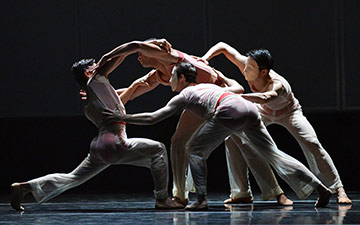
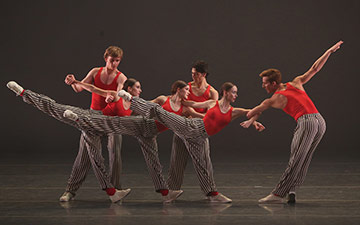
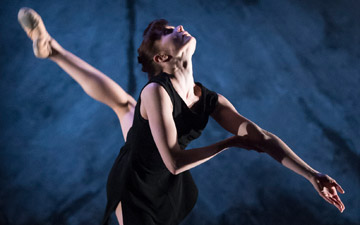
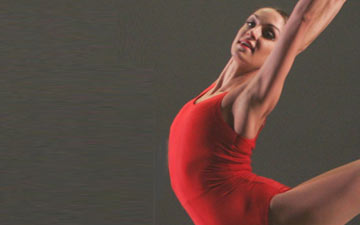
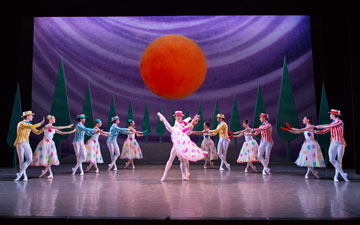
You must be logged in to post a comment.